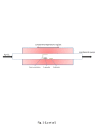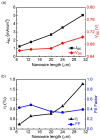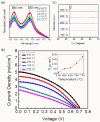Direct synthesis of vertically aligned ZnO nanowires on FTO substrates using a CVD method and the improvement of photovoltaic performance
- PMID: 22673046
- PMCID: PMC3413561
- DOI: 10.1186/1556-276X-7-293
Direct synthesis of vertically aligned ZnO nanowires on FTO substrates using a CVD method and the improvement of photovoltaic performance
Abstract
In this work, we report a direct synthesis of vertically aligned ZnO nanowires on fluorine-doped tin oxide-coated substrates using the chemical vapor deposition (CVD) method. ZnO nanowires with a length of more than 30 μm were synthesized, and dye-sensitized solar cells (DSSCs) based on the as-grown nanowires were fabricated, which showed improvement of the device performance compared to those fabricated using transferred ZnO nanowires. Dependence of the cell performance on nanowire length and annealing temperature was also examined. This synthesis method provided a straightforward, one-step CVD process to grow relatively long ZnO nanowires and avoided subsequent nanowire transfer process, which simplified DSSC fabrication and improved cell performance.
Figures






References
-
- O'Regan B, Grätzel M. A low-cost, high efficiency solar cell based on dye-sensitized colloidal titanium dioxide films. Nature. 1991;353:737–740. doi: 10.1038/353737a0. - DOI
-
- Li B, Wang L, Kang B, Wang P, Qiu Y. Review of recent progress in solid-state dye-sensitized solar cells. Sol Energ Mat Sol C. 2006;90:549–573. doi: 10.1016/j.solmat.2005.04.039. - DOI
-
- Chen J, Lu L, Wang W. Zn2SnO4 nanowires as photoanode for dye-sensitized solar cells and the improvement on open-circuit voltage. J Phys Chem C. 2012;116:10841–11847. doi: 10.1021/jp301770n. - DOI
-
- Huang SY, Schlichthörl G, Nozik AJ, Grätzel M, Frank AJ. Charge recombination in dye-sensitized nanocrystalline TiO2 solar cells. J Phys Chem B. 1997;101:2576–2582. doi: 10.1021/jp962377q. - DOI
LinkOut - more resources
Full Text Sources

